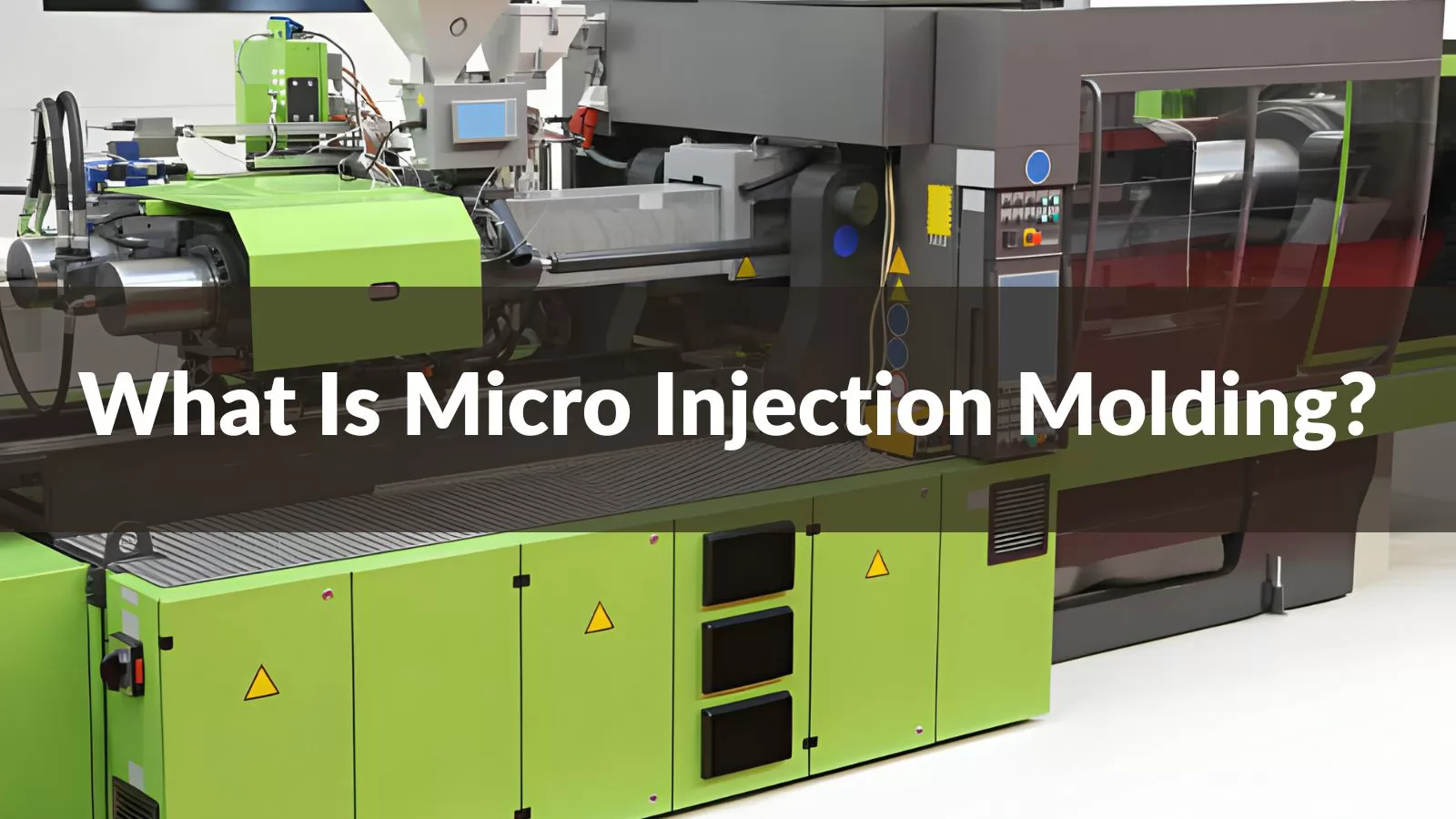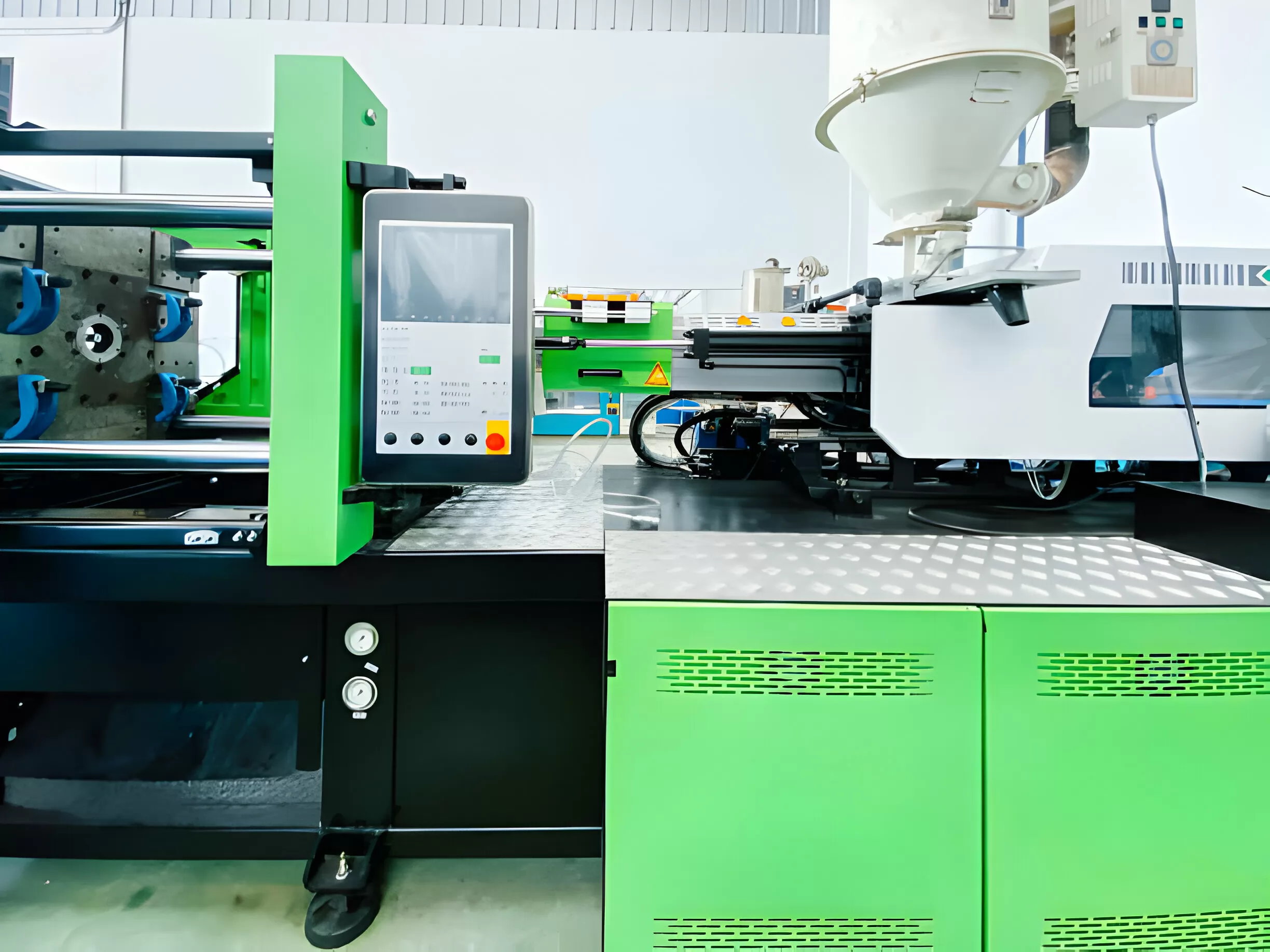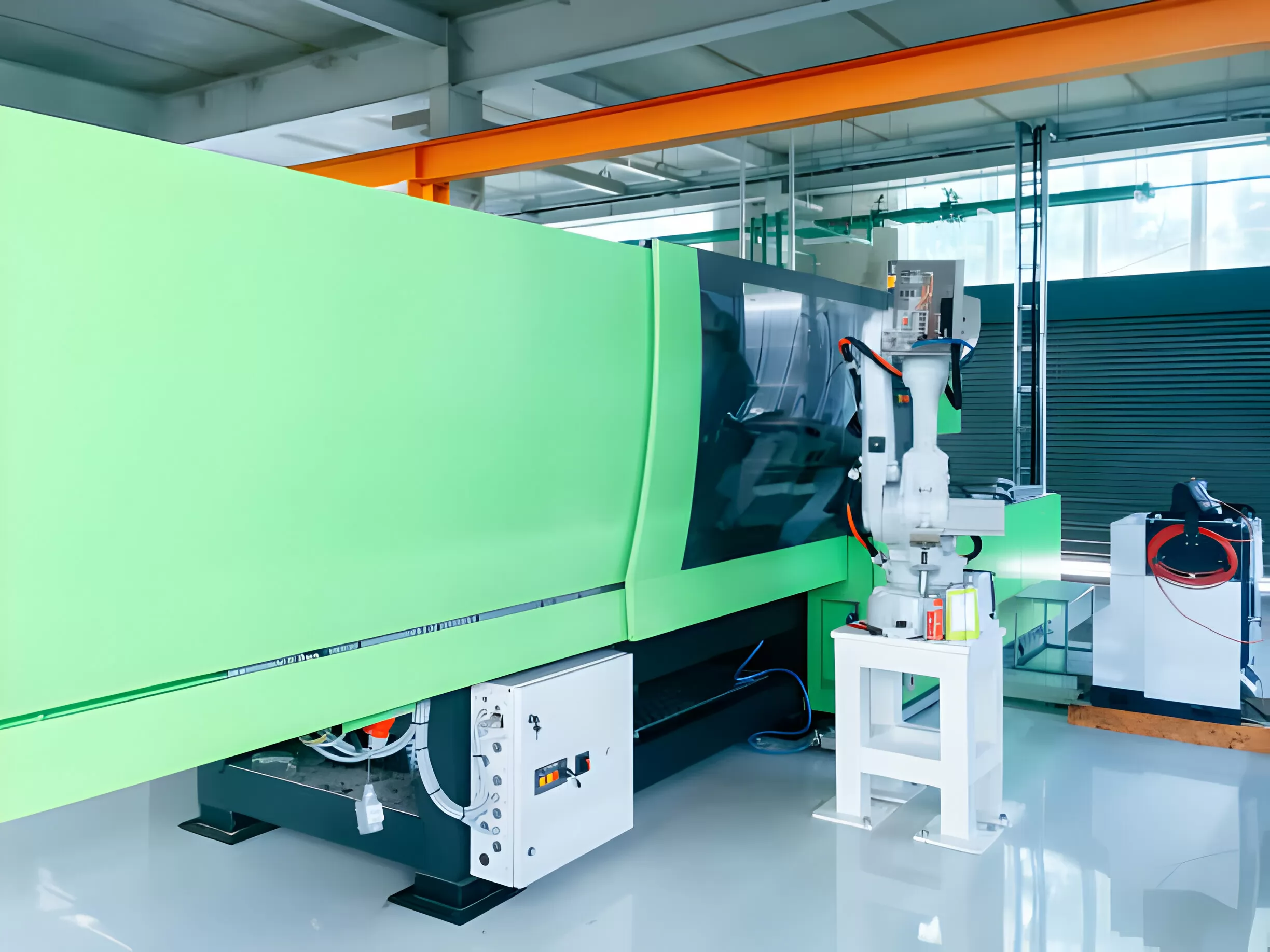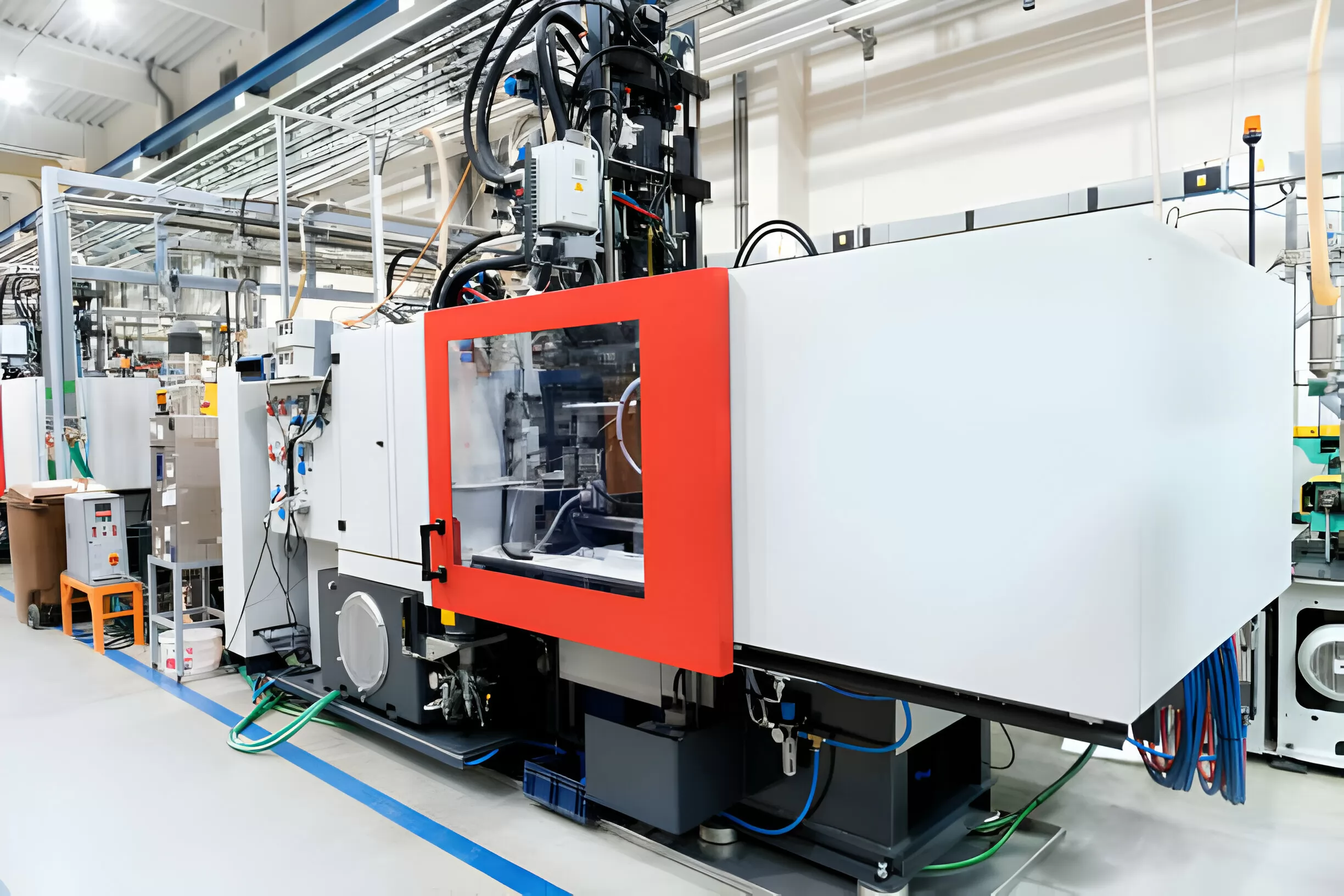
Micro injection molding is a specialized form of plastic molding aimed at manufacturing extremely small, high-precision parts and components with intricate details. This process allows for the production of tiny parts that weigh less than a gram, using thermoplastics, elastomers, or polymers. It is highly valued in various industries such as medical, electronics, and micro-mechanics due to its ability to efficiently produce large quantities of small-scale components with complex geometries and excellent accuracy.
What Is Micro Injection Molding
Micro injection molding is a specialized form of molding that focuses on the production of small, high-precision parts and components. This process utilizes standard injection molding machines equipped with fine-resolution controls and smaller-scale molds to fabricate diminutive parts that weigh less than a gram and can feature intricate details and tight tolerances.
The technique is engineered to address the challenges of miniaturization, catering to industries where small components are crucial but must maintain high performance and quality standards. The scaling down in size does not compromise the complexity of the shapes that can be produced, allowing for a wide variety of geometric features and designs.
Utilizing thermoplastics, elastomers, or more exotic materials, micro injection molding gives manufacturers a versatile toolset for component production. The choice of material plays a critical role in achieving the desired properties in the final product, such as durability, flexibility, or thermal resistance.
Specialized equipment designed for micro-scale processing ensures that these tiny parts are molded with precision. These machines often include features like enhanced injection pressure control and advanced monitoring to maintain consistency across production batches.
This unique combination of machinery, materials science, and engineering expertise makes micro injection molding an invaluable manufacturing process for industries requiring high-precision components such as medical devices, electronics, automotive applications, and more.
Principles Of Micro Molding
Micro injection molding is a highly specialized process that introduces the manufacturing world to the capability of producing intricate components on a minuscule scale. This technique necessitates adherence to a set of foundational principles guiding its precise and efficient execution.
The initial principle centers around extreme precision and accuracy. Due to the diminutive size of the parts being produced, there is an inherent necessity for high-precision equipment capable of controlling minuscule movements and injections with pinpoint accuracy. The machinery involved must offer exceptional control over all aspects of the production process, from the volume of material injected to the timing and pressure applied during each cycle.
Another vital principle is the optimization of material usage. The small scale of these components implies that even slight inefficiencies in material use can lead to significant waste percentages or impact product quality negatively. Effective micro molding processes are designed to minimize excess material consumption, focusing on sustainability and cost-effectiveness without compromising the integrity of the final product.
Furthermore, micro injection molding adheres to principles emphasizing tooling design’s importance. Since creating molds for such small parts poses unique challenges, including ensuring proper cooling and ejection mechanisms, meticulous attention must be paid to designing molds that not only meet dimensional tolerances but also support efficient production cycles.
Thermal management constitutes another critical principle in micro molding. Precisely controlling temperature throughout both the mold and the material is crucial due to their direct effect on part quality, cycle times, and overall productivity. This requires sophisticated machine designs capable of maintaining optimal temperatures for each specific resin type used in micro parts.
Lastly, stringent quality control measures are indispensable in micro injection molding operations. Given the tiny sizes involved, detecting defects or irregularities demands state-of-the-art inspection technologies alongside rigorous testing procedures. Ensuring consistent quality across batches of microscopic components necessitates a level of oversight far beyond what might suffice for larger-scale productions.

Benefits Of Micro Injection Molding
Precision and Complexity in Micro Injection Molding
Micro injection molding is renowned for its ability to meet high standards of precision and manage complex part geometries. This process excels in creating minute components that demand exact tolerances, which are increasingly prevalent in industries such as medical, electronics, and micro-mechanics.
Within the sphere of micro molding, the complexity that can be achieved in parts is groundbreaking. The technology permits the incorporation of intricate features and detailed geometries that were once considered impossible to mold. Such complexity includes thin walls, complex internal structures, and precise surface textures. These attributes are essential for components requiring high functionality and performance in miniature sizes.
The degree of precision achievable through micro injection molding extends to maintaining consistent part quality and repeatability across high volumes. This consistency is critical for applications where even minor deviations could render a component ineffective or unfit for use. By employing specialized molds and advanced process controls, micro molders can produce parts with tolerances as tight as a few micrometers, ensuring each piece meets stringent specifications.
Moreover, the integration of sophisticated designs into micro-sized parts has broadened the scope of possibilities for product development and innovation. The ability to mold complex shapes with precision expands design freedom, allowing engineers to push the boundaries of what’s possible in miniaturization. Whether it’s creating a micro gear with exceptional accuracy or embedding unique identifiers within a small medical device, this level of detail supports enhanced functionality and product differentiation.
Material Selection And Compatibility
Choosing the appropriate materials for micro injection molding is a nuanced process that demands thorough understanding and consideration. The compatibility of materials with the product’s intended use, as well as with the micro molding process itself, stands paramount in ensuring the final component’s performance, durability, and aesthetic integrity.
Materials utilized in micro injection molding vary widely, encompassing a broad spectrum of polymers and composites. These materials must be carefully selected based on their physical properties, such as strength, flexibility, thermal stability, and chemical resistance. For instance, thermoplastics like Polyethylene (PE), Polypropylene (PP), Polycarbonate (PC), and Poly(methyl methacrylate) (PMMA) are frequently chosen for their versatility and excellent mechanical properties.
The intricacies of micro-molded parts also necessitate materials with specific flow characteristics. The ability of a material to fill the extremely small cavities of a micro mold without degrading or losing its key attributes is essential. This requirement often leads to the selection of high-flow polymers that can replicate intricate details without compromising structural integrity.
Another crucial aspect of material selection involves assessing its compatibility with other components of the system it will integrate with. Issues like thermal expansion coefficients need to be matched to avoid stresses that could lead to failure in multi-material assemblies. Similarly, chemical compatibility is vital when parts are expected to interact with various substances during their lifecycle.
Opting for materials that align well with sustainable manufacturing practices is also gaining imperative focus. Biocompatible and biodegradable polymers are increasingly sought after in medical applications and consumer products where environmental impact is a significant concern.
Cost-Effectiveness and Efficiency
Micro injection molding stands out as a cost-effective and efficient manufacturing process, particularly well-suited for the production of small, complex components. This method allows for the mass production of parts with minute features at a lower cost when compared to traditional molding techniques. The efficiency of this process plays a crucial role in reducing waste and speeding up production times, which in turn contributes significantly to overall cost savings.
The miniaturization of parts requires less material usage, which directly influences the reduction in cost. Additionally, micro injection molding machines are designed to offer high precision while consuming less energy compared to conventional injection molding equipment. This advancement leads to an environment where manufacturing micro-sized components becomes more sustainable and economically feasible.
Another aspect that underscores the cost-effectiveness and efficiency of micro injection molding is its capability to produce intricate parts in one cycle. This alleviates the need for secondary operations such as assembly or machining, further reducing labor costs and minimizing the production timeline. The ability to incorporate various features into a single component without compromising quality or functionality makes this technology invaluable across industries requiring high precision and detail.

Critical Factors Of Micro Injection Molding
Parting Line Issue
In the realm of micro injection molding, the parting line issue emerges as a critical factor that demands meticulous attention from manufacturers. This problem arises at the juncture where the two halves of the injection mold come together. Ensuring a precise and seamless alignment at this intersection is paramount, as even the slightest discrepancy can lead to defects in the final product. The challenge is accentuated in micro molding due to the diminutive size of the components being produced, which necessitates an even greater level of precision.
The implications of an improperly managed parting line are multifaceted. Firstly, a misaligned parting line can contribute to aesthetic flaws on the surface of the molded item, which may render it unsuitable for applications where visual quality is paramount. Additionally, such issues can compromise the structural integrity of the component, potentially leading to functional deficiencies that affect its performance in end-use applications.
To address this concern, manufacturers employ various strategies aimed at achieving optimal alignment and maintaining tight tolerances across the mold’s parting line. Advanced manufacturing techniques and high-precision equipment play a pivotal role in mitigating these challenges. Moreover, regular maintenance and calibration of molding machines and tools are essential practices that help ensure consistent quality over time.
Degating Issue
The degating process in micro injection molding represents a significant challenge due to the miniature size and intricate details of the components produced. This stage involves the removal of the gate, which is the point where molten material is injected into the mold. Given the diminutive dimensions and complex geometries involved in micro-molded parts, executing this step with precision is paramount to maintain the integrity and functionality of the final product.
One primary concern during degating is ensuring that the part does not get damaged. Given their small size, micro-molded parts are inherently delicate. A slight error in force application or cutting position can cause deformities or breakage. Hence, manufacturers often resort to automated processes using specialized equipment capable of high precision to minimize human error.
Another aspect that exacerbates the degating issue is material selection. Different materials exhibit varying degrees of hardness and flexibility, influencing how they respond to degating techniques. For instance, softer materials might require less force for gate removal but are more susceptible to deformation during the process. Conversely, harder materials might resist deformation but could be more challenging to cut cleanly without leaving remnants or causing stress concentration points that could lead to part failure under use.
Precision in the degating process is critical not only for aesthetic reasons but also for functional ones. Any remnants from poor degation can interfere with part assembly or operation, especially in applications where micro parts must fit together with tight tolerances or move freely without obstruction.
To address these challenges, recent advancements include laser-based degating methods and highly specialized tools designed for specific materials and component geometries. These innovations aim at improving precision while reducing potential damage to parts, thereby ensuring that components meet stringent quality standards demanded by industries relying on micro injection molded products.
Sprue and Runner Size
The sprue serves as the initial passage through which the molten plastic enters the mold. Its size is critical—too large, and it causes unnecessary waste of materials; too small, and it might hinder the flow of plastic, leading to defects in the final product. Achieving a balance in sprue size is essential for maintaining high-quality output in micro injection molding processes.
Similarly, runners —the network of channels that direct the molten plastic from the sprue to various parts of the mold—demand careful design consideration. Correct runner sizing ensures uniform flow and distribution of plastic, preventing issues like premature cooling or incomplete filling. However, excessive runner volume can lead to increased cycle times and elevated material costs due to wasted resin.
Optimizing sprue and runner sizes isn’t just about reducing waste or saving on materials; it’s also about ensuring that cycle times are kept as short as possible without compromising product quality. A well-designed system contributes significantly to operational efficiency, impacting overall production timelines and cost-effectiveness.
Material Of Micro Injection Molding
The material selection process for micro injection molding is a pivotal factor that significantly impacts the final product’s performance, quality, and compatibility with its intended application. Given the scale and intricacy of micro-sized parts, materials used in micro injection molding need to fulfill specific criteria such as high flowability, stability under processing conditions, and suitability for producing complex shapes with high precision.
Materials commonly employed in micro injection molding encompass a wide range of thermoplastic polymers. These include but are not limited to Polyethylene (PE), Polypropylene (PP), Polycarbonate (PC), Polyamide (PA), and thermoplastic elastomers (TPE). Each of these materials offers distinct properties that make them favorable for different applications. For instance, PC is known for its strength and transparency, making it ideal for medical devices, while PA offers excellent mechanical properties and temperature resistance suitable for automotive components.
Furthermore, the advancement in material science has introduced specialty compounds specifically designed to enhance the performance of micromolded parts. These include filled polymers which contain additives like glass fibers or carbon nanotubes to improve strength or electrical conductivity respectively. Biocompatible polymers have also gained popularity for use in medical applications due to their compliance with regulatory standards.
Selecting the right material requires a thorough understanding of the part’s functional requirements alongside considerations regarding the part’s environment exposure such as temperature, chemicals, and physical strains. The chosen material must not only be adaptable to the intricate shaping abilities of micro injection molding but also cost-effective without compromising quality.
Additionally, compatibility between the selected material and other components of the end product is critical. This encompasses considerations around bonding between different materials, potential chemical reactions, or stress factors that may lead to degradation over time.

Applications Of Micro Injection Molding
- Medical Industry: Production of miniature components for surgical instruments, implants, and diagnostic equipment, where precision and complexity are crucial.
- Electronics Sector: Manufacturing of tiny components like connectors, sensors, and switches for smartphones, laptops, and consumer electronics, facilitating the trend toward miniaturization.
- Automotive Manufacturing: Fabrication of small, intricate components for vehicles’ electrical systems, lighting technologies, and under-the-hood applications, requiring high-strength materials and precision engineering.
- Robotics and Mechanical Devices: Production of micro-sized gears and components for sophisticated and smaller robots, demanding durable yet precise parts.
- Aerospace Industry: Creation of lightweight yet strong components to enhance fuel efficiency and performance of aerospace vehicles, where weight reduction without compromising strength is essential.
- Consumer Products: Manufacturing of small-scale components for watches or wearable technology, needing to maintain aesthetic appeal alongside functionality and durability.
Machine Used For Micro Injection Molding
The machines utilized for micro injection molding are specialized pieces of equipment designed to handle the intricacies and precise requirements of micro-molded parts. These machines, often characterized by their precision, advanced control capabilities, and efficiency, cater specifically to the miniaturization trend in various industries such as medical, electronics, and automotive.
Micro injection molding machines differ from standard injection molding machinery in several key areas. Firstly, they are capable of handling exceedingly small shot sizes with high precision. This is critical for producing tiny components that weigh less than a gram. The precision extends not just to weight but also to the control of injection speed and pressure, ensuring the mold is filled accurately and consistently without causing damage to the tools or producing defective parts.
Furthermore, these machines feature enhanced clamping systems. Given that micro molded parts often have very tight tolerances, uniform clamping force across the entire mold is necessary to prevent defects and ensure part quality. This tight control helps maintain consistency across production runs.
Another aspect worth noting is the integration of advanced technologies into these machines. They frequently support computer-aided design (CAD) and computer-aided manufacturing (CAM) software which facilitate meticulous planning and execution of micro molding projects. Such integrations allow for quicker setup times, more consistent production cycles, and ultimately lower overall costs.
In addition to technology integration, the physical aspects of these machines are also distinct. They tend to have smaller footprints compared to traditional injection molding machinery. This size advantage allows manufacturers with limited space to nonetheless engage in micro molding activities.
Lastly, maintenance and operational considerations for micro injection molding machines are unique due to their specialized nature. Operators must be highly skilled in managing these sophisticated systems—understanding both their software interfaces for controlling process parameters and their mechanical adjustments for optimal performance.
Challenges and Considerations in Micro Molding
Material Selection
When engaging in micro injection molding, material selection emerges as a pivotal factor. The properties of the material must align with the intricacies and precision required for micro-sized components. Certain materials may exhibit behavior changes when molded into thin walls or small features, impacting the overall functionality and durability of the finished product.
Precision Requirements
The demand for high precision poses a significant challenge. Achieving consistent accuracy on a micro-scale necessitates advanced technology and stringent process control. Any slight deviation can lead to significant discrepancies in such small dimensions, making it essential to maintain tight tolerances throughout the production process.
Tooling Design
Tooling design is another critical consideration. The tools used for micro injection molding must themselves be fabricated with high precision to ensure they can produce the desired minute parts without defects. This requires sophisticated equipment and considerable expertise, increasing both the complexity and cost of the project.
Volume Constraints
The small size of parts also introduces volume constraints, affecting both material flow within the mold and cooling times. Ensuring uniform flow and adequate cooling without causing warpage or sink marks is challenging but crucial for maintaining part integrity.
Quality Control
Quality control presents unique challenges in micro molding due to the diminutive size of components, making inspection and testing more intricate. Traditional methods may not be sufficient, necessitating the use of specialized inspection equipment capable of detecting sub-millimeter defects.
In Conclusion
Micro injection molding is a highly precise manufacturing process designed for producing extremely small, high-quality parts with tight tolerances.
To further explore the advantages of micro injection molding and how it can benefit your manufacturing needs, we encourage you to contact our team for detailed information. Let us help you navigate the intricacies of this advanced technology to optimize your product development process.


